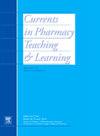将COEPA委托规模的表现与技能实验室设置中的传统分级内容进行比较:确定评估机会的试点研究
IF 1.4
Q3 EDUCATION, SCIENTIFIC DISCIPLINES
引用次数: 0
摘要
目的评价在技能实验室环境下,COEPA委托量表与内容标准的评估结果是否一致。方法在2023年秋季技能实验室课程中,将非分级COEPA委托量表与传统分级内容规则一起添加到客观结构化临床考试(oses)中。将COEPA量表水平与同一机构三个不同技能实验室的oses内容分数进行比较。比较采用描述性统计。作者假设在COEPA量表上的表现与在内容准则上的表现相对应。COEPA量表水平低于比较内容评分的学生将被认为表现低于预期水平。COEPA量表水平高于比较内容评分的学生将被认为表现高于预期水平。结果共评估了三个队列的134名学生。学生得分低于预期分数的占23.4%,高于预期分数的占29.7%。然而,对于低于COEPA预期水平的(1.8 - 46.7%)和高于COEPA预期水平的(0 - 70.2%),不同评估的百分比差异很大。虽然在技能实验室的内容和COEPA分数之间没有一致的对应关系,但委托量表提供了一个新的数据点来跟踪学习者的发展和向经验准备的进展,同时也提供了更实用的反馈。此外,COEPA委托量表的使用进一步证明了一些错误的严重性。本文章由计算机程序翻译,如有差异,请以英文原文为准。
Comparing COEPA entrustment scale performance to traditionally graded content in a skills laboratory setting: A pilot study identifying assessment opportunities
Objective
To evaluate if assessment outcomes on content rubrics and prospective COEPA entrustment scales correspond in the skills laboratory setting.
Methods
Non-graded COEPA entrustment scales were added alongside traditional graded content rubrics for objective structured clinical exams (OSCEs) during fall 2023 skills laboratory offerings. COEPA scale levels were compared to content scores for OSCEs across three different skills laboratories at one institution. Descriptive statistics were used in the comparisons. The authors hypothesized that performance on the COEPA scale would correspond with performance on the content rubrics. A student whose COEPA scale level was below the compared content rubric score would be considered to be performing below the expected level. A student whose COEPA scale level was above the compared content rubric score would be considered to be performing above the expected level.
Results
A total of 134 students across three cohorts were assessed. Students scored below the expected score 23.4 % of the time and above the expected score 29.7 % of the time. However, the percentage varies widely by assessment for those below the expected COEPA level (1.8 to 46.7 %) and for those above the expected COEPA level (0 to 70.2 %).
Conclusions
While there was not consistent correspondence between content and COEPA scores across the skills laboratories, the entrustment scale offers a new data point to track learner development and progression towards experiential readiness while also providing more practical feedback. Additionally, the use of COEPA entrustment scales further demonstrates the gravity of some errors.
求助全文
通过发布文献求助,成功后即可免费获取论文全文。
去求助
来源期刊

Currents in Pharmacy Teaching and Learning
EDUCATION, SCIENTIFIC DISCIPLINES-
CiteScore
2.10
自引率
16.70%
发文量
192
 求助内容:
求助内容: 应助结果提醒方式:
应助结果提醒方式:


